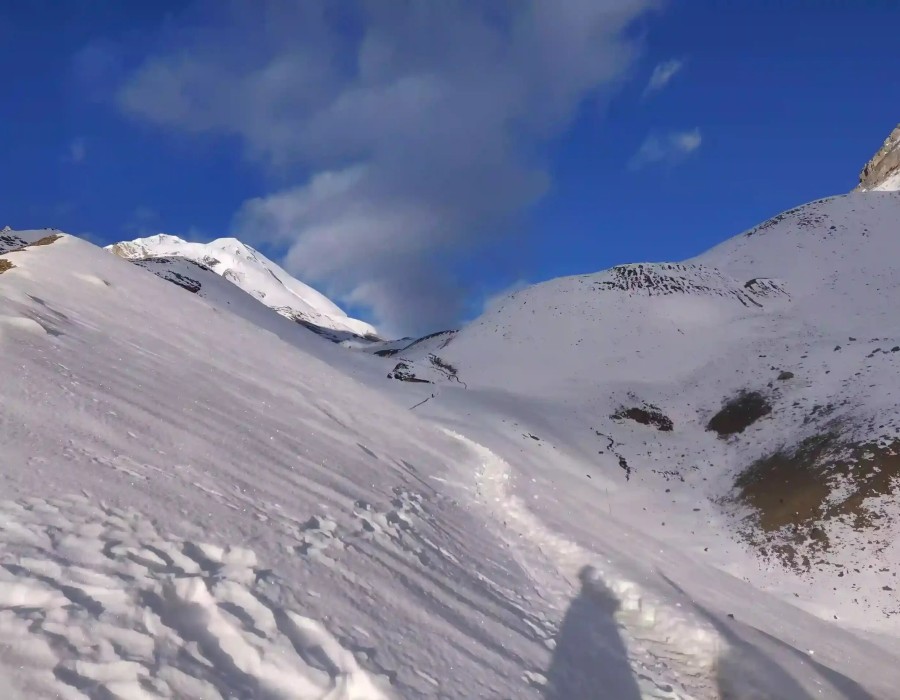The Annapurna Circuit Trek is a story that unfolds with every step, every sunrise, and every new village along the way. Imagine starting your journey in the green valleys of Nepal, where rice paddies stretch out and the air feels thick with the scent of earth and forest. The path ahead is long, winding through a patchwork of landscapes and cultures, and you never quite know what is waiting around the next bend.
As you leave the lower hills behind, the trail leads you through villages where prayer flags flutter and the sound of laughter drifts from teahouse kitchens. The route is like a living map, connecting places with names that soon feel familiar: Dharapani, Chame, Pisang, and Manang. Each stop is a chance to catch your breath and share stories with people from around the world, or just watch the mountains change color as the sun dips low.
The climb is steady but gentle at first, following the Marsyangdi River as it carves its way through deep gorges. Forests of pine and oak give way to drier, rockier slopes. By the time you reach Manang, you’re surrounded by giants Annapurna II, III, and IV, Gangapurna, and Tilicho Peak. Here, the air is thinner, and the pace slows. It’s a good place to rest, sip hot tea, and let your body adjust to the altitude.
Beyond Manang, the landscape shifts again. Trees become scarce, replaced by windswept hills and grazing yaks. The route climbs higher to Yak Kharka and Thorong Phedi, where trekkers gather in cozy lodges, swapping tips about the next big challenge: Thorong La Pass. This is the highest point of the trek, sitting at 5,416 meters, and it’s a name that sticks in your mind long before you reach it.
Crossing Thorong La feels like stepping onto the roof of the world. The air bites at your cheeks, and every breath is a reminder of how high you’ve climbed. When the sun rises here, the sky blushes pink and gold, and the snowy peaks catch fire with the first light. It’s a moment that makes you forget the cold and the tiredness—just you, the mountains, and the promise of a new day.
On the other side of the pass, the trail drops quickly into Mustang, where the landscape turns dry and almost desert-like. Muktinath greets you with its ancient temples and the sound of spinning prayer wheels. The route then follows the Kali Gandaki Gorge, said to be the deepest in the world, squeezed between Annapurna and Dhaulagiri. Wind whistles through the valley, carrying the scent of apple orchards and the distant ring of cowbells.
As you move on, the path takes you to Tatopani, a village famous for its natural hot springs a welcome treat for tired legs. Here, the laughter of trekkers mixes with the steam rising from the pools. The route then climbs again through rhododendron forests toward Ghorepani, a village perched high above the valleys.
Ghorepani is the gateway to one of the trek’s most magical moments: sunrise at Poon Hill. In the early hours, you join a quiet parade of headlamps snaking up the hillside. At the top, the world is still dark, but the air buzzes with excitement. Then, slowly, the sky brightens, and the first rays hit the peaks of Annapurna and Dhaulagiri. The mountains glow orange and pink, and for a few minutes, everyone falls silent, lost in the beauty of it all.
The last part of the trek winds down through terraced fields and small villages, where kids wave from doorways and the smell of woodsmoke hangs in the air. Finally, you reach the road to Pokhara, where the adventure ends, but the story stays with you.
The Annapurna Circuit Trek isn’t just about walking from one place to another. It’s about the changing landscapes, the people you meet, and the sunrises that make you feel alive. Every turn on the route brings something new, and every sunrise feels like a reward for the miles behind you.






Comments